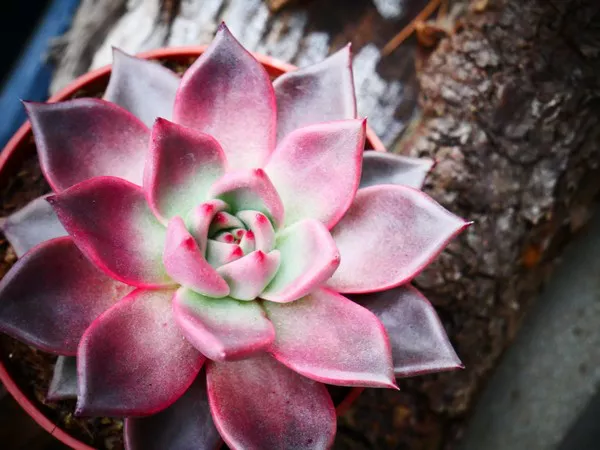Succulents, with their diverse and captivating forms, have become the darlings of the plant enthusiast community. Among these charismatic plants, the moonstone succulent (Pachyphytum oviferum) stands out for its otherworldly appearance and ease of care. In this comprehensive guide, we will delve into the art of cultivating moonstone succulents, exploring key aspects of their growth, care, and propagation. Let’s embark on a journey to unlock the secrets of nurturing these mesmerizing succulents.
Understanding the Moonstone Succulent
The succulent world boasts a myriad of species, but the moonstone succulent, with its fleshy, rounded leaves resembling lunar orbs, captures the imagination of many. Originating from Mexico, this succulent belongs to the Crassulaceae family and is celebrated for its adaptive qualities. Its ability to store water in its leaves allows it to thrive in arid conditions, making it an excellent choice for both novice and seasoned succulent enthusiasts.
Choosing the Right Environment
Creating an optimal environment is crucial for the successful growth of moonstone succulents. These succulents thrive in well-draining soil, preventing waterlogged conditions that can lead to root rot – a common issue in succulent care. When selecting a pot, consider one with drainage holes to facilitate proper water drainage. The succulent’s natural habitat offers valuable insights into its preferred conditions, emphasizing the importance of bright, indirect sunlight for healthy growth.
Succulent Soil Mix and Potting
The foundation for a flourishing moonstone succulent lies in the soil mix. Crafting a well-balanced blend with components such as perlite, coarse sand, and a cactus mix ensures adequate drainage while supplying essential nutrients. Potting the succulent involves placing it in a container with the prepared soil, ensuring the roots have enough space to spread. Regular repotting every 2-3 years refreshes the soil, promoting continued vigor in the succulent.
See Also: How to water a cactus succulent?
Watering Strategies for Succulent Success
Succulents, including the moonstone variety, have adapted to survive in drought-prone regions. Understanding their water requirements is fundamental to preventing overwatering, a common pitfall in succulent care. Implementing a “soak and dry” approach, where the soil is thoroughly moistened, followed by a period of drying, mirrors the natural conditions of their native habitat. Monitoring the soil moisture with a moisture meter aids in striking the right balance, fostering a healthy succulent.
Fertilizing Moonstone Succulents
Succulents are known for their resilience in nutrient-poor soils, but periodic fertilization can enhance their growth and vibrancy. Choosing a balanced, water-soluble fertilizer with a lower nitrogen content promotes compact growth without encouraging excessive stretching. Applying the fertilizer during the growing season – typically spring and summer – supports the succulent’s natural growth cycle, ensuring it receives the nutrients it needs for optimal development.
Succulent Sunlight Requirements
Light plays a pivotal role in the life of any succulent, and moonstone succulents are no exception. These beauties thrive in bright, indirect sunlight, replicating the conditions of their native habitat. Providing filtered sunlight or placing them near a south or west-facing window prevents sunburn while promoting the succulent’s signature compact and vibrant appearance. Observing the succulent’s response to sunlight helps tailor its placement for maximum benefit.
Pruning and Propagation Techniques
Maintaining the desired shape and size of your moonstone succulent involves occasional pruning. Removing dead or damaged leaves not only enhances its aesthetic appeal but also prevents the onset of potential diseases. Propagation, a fascinating aspect of succulent care, allows enthusiasts to multiply their moonstone collection. Leaf cuttings or offsets can be used to propagate new plants, each carrying the genetic beauty of the parent succulent.
Succulent Pests and Diseases
While moonstone succulents are generally hardy, they can be susceptible to pests and diseases if not properly cared for. Common pests include mealybugs and aphids, which can be controlled through organic solutions like neem oil. Additionally, maintaining proper air circulation and avoiding overwatering are effective preventive measures against fungal infections. Regular inspections and prompt treatment ensure the succulent remains robust and disease-free.
Winter Care for Moonstone Succulents
As winter approaches, succulent care requires adjustments to accommodate lower light levels and cooler temperatures. Moonstone succulents benefit from a winter dormancy period, during which their watering frequency should be reduced. Protecting them from frost and cold drafts is essential to prevent damage. Indoor growers may need to consider supplemental lighting to provide the necessary light during the darker winter months.
Conclusion
In conclusion, cultivating moonstone succulents is a rewarding endeavor that combines the joy of gardening with the satisfaction of nurturing a unique and captivating plant. By understanding their specific needs, from soil composition to sunlight requirements, succulent enthusiasts can create an environment where moonstone succulents can thrive. With proper care, these resilient succulents will not only survive but will grace your space with their mesmerizing beauty for years to come. Embrace the journey of succulent cultivation, and let the moonstone succulent be the shining star in your succulent collection.


